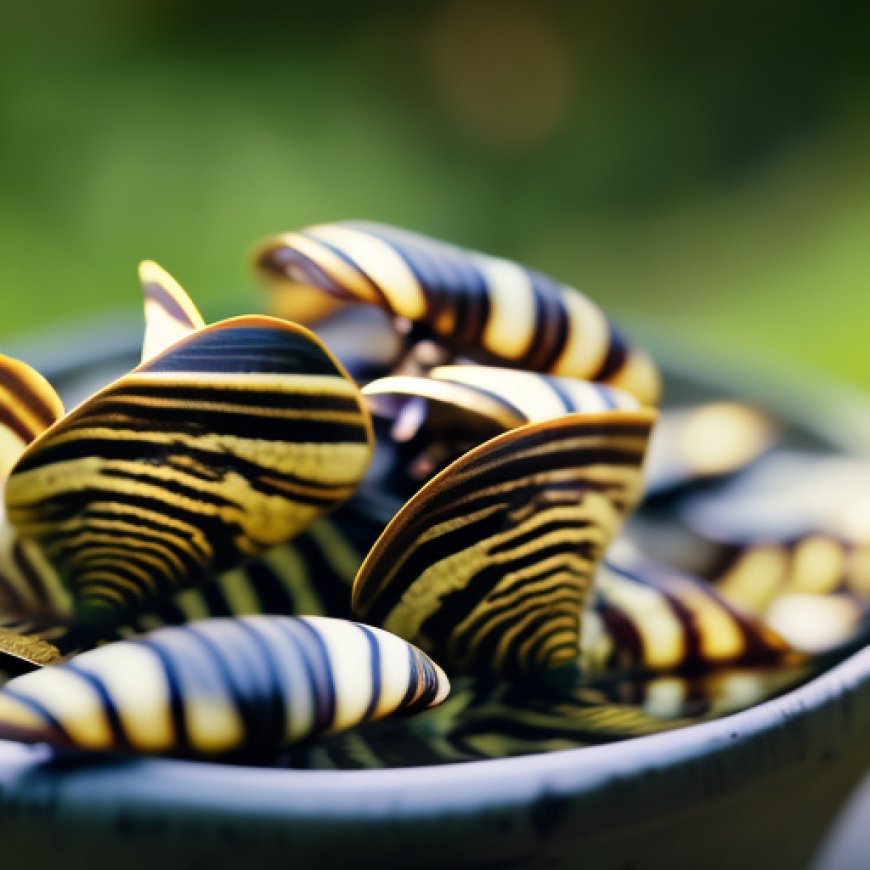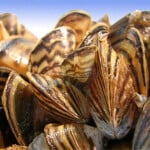Invasive zebra mussels found in North Carolina – WWAYTV3
Invasive zebra mussels found in North Carolina WWAY NewsChannel 3


Sustainable Development Goals (SDGs) and the Identification of Zebra Mussels in North Carolina
Date Published: 16 hours ago

The NC Wildlife Resources Commission has reported the identification of zebra mussels, a harmful invasive aquatic species, in an Iredell County waterbody. This marks the first time that this species has been identified in the wild in North Carolina.
On Thursday, the NCWRC, with assistance from scuba divers from the U.S. Fish and Wildlife Service, conducted an investigation and confirmed the presence of zebra mussels in a quarry on private property. The NCWRC believes that the mussels are contained within the quarry and is currently exploring treatment options while continuing its investigation.
Zebra mussels are highly prolific and can spread to other water bodies by attaching themselves to boats, docks, lifts, and other water-related equipment. Their microscopic larvae can be transported through any water that is moved to another location, including diving equipment, live wells, bait buckets, boat bilges, or other gear.
Once established, zebra mussels can quickly dominate an environment and negatively impact the health of other aquatic wildlife by disrupting the food chain and altering the water’s chemistry. They can also cause clogs in public drinking and wastewater systems and damage recreational equipment.
In March 2021, zebra mussels were discovered living in moss balls sold in pet stores for aquarium use. Due to their destructive impact, it is illegal to transport, purchase, possess, sell, or stock zebra mussels in public or private waters in North Carolina.
To prevent the spread of invasive species, the NCWRC recommends the following measures:
- Clean equipment of all aquatic plants, animals, and mud
- Drain water from boats, live wells, bait buckets, and all equipment
- Dry all equipment thoroughly
- Never move fish, plants, or other organisms from one body of water to another
If you suspect the presence of zebra mussels, please contact the NCWRC’s district fisheries biologist offices.
SDGs, Targets, and Indicators
-
SDG 14: Life Below Water
- Target 14.1: By 2025, prevent and significantly reduce marine pollution of all kinds, in particular from land-based activities, including marine debris and nutrient pollution.
- Indicator: Presence of invasive species in water bodies.
-
SDG 15: Life on Land
- Target 15.8: By 2020, introduce measures to prevent the introduction and significantly reduce the impact of invasive alien species on land and water ecosystems and control or eradicate the priority species.
- Indicator: Identification of invasive species in new areas.
Table: SDGs, Targets, and Indicators
| SDGs | Targets | Indicators |
|---|---|---|
| SDG 14: Life Below Water | Target 14.1: By 2025, prevent and significantly reduce marine pollution of all kinds, in particular from land-based activities, including marine debris and nutrient pollution. | Presence of invasive species in water bodies. |
| SDG 15: Life on Land | Target 15.8: By 2020, introduce measures to prevent the introduction and significantly reduce the impact of invasive alien species on land and water ecosystems and control or eradicate the priority species. | Identification of invasive species in new areas. |
Analysis
The article discusses the presence of zebra mussels, an invasive aquatic species, in an Iredell County waterbody in North Carolina. Based on the content of the article, the following SDGs, targets, and indicators can be identified:
SDG 14: Life Below Water
This SDG is relevant because zebra mussels are an invasive species that can disrupt aquatic ecosystems and affect the health of other aquatic wildlife. The presence of zebra mussels in water bodies indicates a potential marine pollution issue.
- Target 14.1: By 2025, prevent and significantly reduce marine pollution of all kinds, in particular from land-based activities, including marine debris and nutrient pollution.
- Indicator: Presence of invasive species in water bodies.
SDG 15: Life on Land
This SDG is relevant because zebra mussels are an invasive species that can impact both land and water ecosystems. The article mentions that zebra mussels can be transported through equipment and affect recreational equipment.
- Target 15.8: By 2020, introduce measures to prevent the introduction and significantly reduce the impact of invasive alien species on land and water ecosystems and control or eradicate the priority species.
- Indicator: Identification of invasive species in new areas.
Overall, the presence of zebra mussels in the waterbody highlights the need for measures to prevent the spread of invasive species and reduce their impact on both marine and land ecosystems.
Behold! This splendid article springs forth from the wellspring of knowledge, shaped by a wondrous proprietary AI technology that delved into a vast ocean of data, illuminating the path towards the Sustainable Development Goals. Remember that all rights are reserved by SDG Investors LLC, empowering us to champion progress together.
Source: wwaytv3.com

Join us, as fellow seekers of change, on a transformative journey at https://sdgtalks.ai/welcome, where you can become a member and actively contribute to shaping a brighter future.







